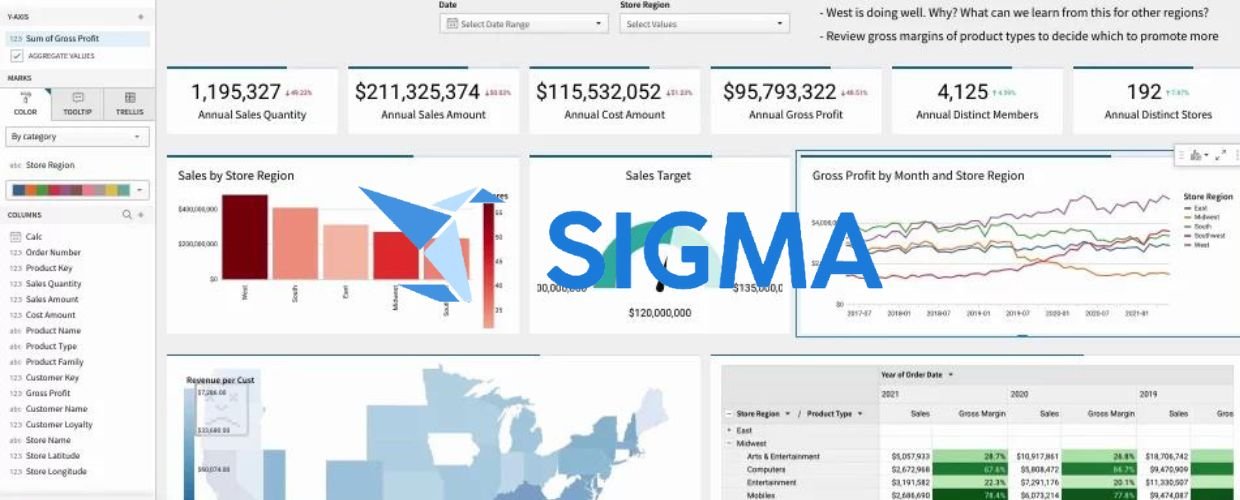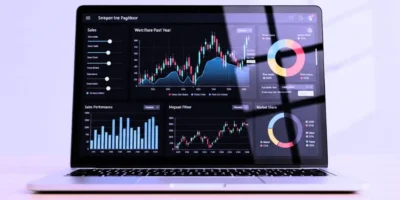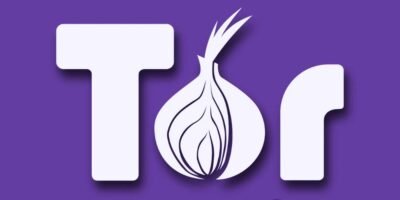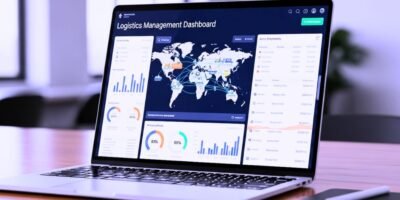Organizations across industries are grappling with the challenge of extracting meaningful insights from vast data. In this article, we will explore Sigma, a leading data analytics and business intelligence platform, and delve into its transformative role in empowering organizations with advanced data exploration and visualization capabilities.
What is Sigma?
Sigma is a cutting-edge data analytics and business intelligence platform that empowers organizations to explore, analyze, and visualize their data most effectively. This platform is designed with the user in mind, making it easy for business users, analysts, and data teams to uncover actionable insights without extensive coding or complex data manipulation, which means that even those without a technical background can use the platform to make informed business decisions.
With its intuitive interface and powerful features, Sigma revolutionizes how organizations leverage their data for decision-making and business growth. Businesses no longer rely on manual data analysis or spend hours manipulating data to get the necessary insights. The intelligent solution simplifies the process, enabling organizations to access the insights they need quickly and efficiently. By utilizing this powerful data analytics and business intelligence platform, organizations can gain a deeper understanding of their data, uncover new growth opportunities, and make smarter, more informed business decisions.
Recommendations and Ratings
EXPERT RECOMMENDATIONS
Overall
-
Easy-of-Use - 85
-
Feature and Functionality - 85
-
Customer Support - 90
-
Setup and Integration - 85
-
Value of Money - 85
User Review
4.33 (21 votes)Key Features and Capabilities of Sigma
Sigma has many features and capabilities that simplify and enhance data analysis. Let’s explore some of the critical components of this versatile platform.
Self-Service Analytics
Sigma is built on the principle of self-service analytics, empowering business users to explore and analyze data independently. With an intuitive drag-and-drop interface, users can effortlessly build queries, create interactive visualizations, and uncover real-time insights. This self-service capability reduces reliance on IT or data teams, enabling business users to make data-driven decisions at the speed of business.
Data Connectivity and Integration
Sigma seamlessly connects to various data sources, including cloud data warehouses, databases, spreadsheets, etc. This broad data connectivity allows users to access and analyze data from multiple sources within a unified platform, eliminating the need for manual data extraction and consolidation. By providing a holistic data view, Sigma enables comprehensive analysis and empowers users to identify correlations and trends across disparate datasets.
Live Data Modeling and Exploration
Its live data modeling capabilities enable users to interact with data models in real-time. With the ability to explore data dynamically, users can iterate and refine their analysis on the fly, making it easier to uncover insights and answer ad-hoc questions. This iterative data exploration process enhances agility and ensures users constantly use the most up-to-date information.
Advanced Visualizations
Sigma offers various visualization options to transform data into compelling visual representations. Users can create interactive dashboards, charts, graphs, and maps with just a few clicks. The platform supports various visualization types, including bar charts, line charts, scatter plots, and heat maps. These visualizations enable users to gain deeper insights, identify patterns, and communicate data-driven narratives effectively.
Collaborative Analytics
The platform promotes collaboration by allowing multiple users to work simultaneously on shared datasets and analyses. With real-time collaboration features, users can seamlessly collaborate, comment, and share insights, fostering teamwork and enhancing the organization’s collective intelligence. This collaborative approach promotes knowledge sharing and facilitates cross-functional decision-making processes.
Data Governance and Security
Data governance and security are paramount in the modern data landscape. Sigma incorporates robust security features, ensuring data access and permissions are managed effectively. Organizations can define granular access controls, monitor user activity, and enforce data governance policies to protect sensitive information. The intelligent platform empowers organizations to trust and rely on their data by maintaining data integrity and security.
Benefits of Sigma
The adoption of Sigma offers numerous benefits to organizations seeking to unlock the full potential of their data. Let’s explore some key advantages.
Democratization of Data
The platform democratizes data analysis by making it accessible to a broader audience beyond data specialists. Business users can directly interact with data, perform ad-hoc analysis, and gain insights without relying on technical expertise. This democratization of data empowers organizations to foster a data-driven culture and derive insights from all levels of the organization.
Accelerated Decision-Making
With its self-service analytics capabilities and intuitive interface, Sigma accelerates decision-making. Users can quickly analyze data, identify trends, and make real-time informed decisions. By reducing the time spent on data preparation and analysis, organizations can be more agile and responsive in today’s fast-paced business landscape.
Actionable Insights
Sigma enables users to uncover actionable insights by providing robust data exploration and visualization tools. Users can identify patterns, correlations, and outliers that drive business success by combining various data sources and leveraging interactive visualizations. These actionable insights empower organizations to optimize processes, improve efficiencies, and seize growth opportunities.
Collaboration and Knowledge Sharing
Its collaborative analytics capabilities foster teamwork and knowledge sharing within organizations. Organizations can leverage collective intelligence and diverse perspectives to derive deeper insights by enabling multiple users to work together on shared datasets. Collaboration encourages cross-functional collaboration and facilitates alignment around data-driven goals.
Data Integrity and Security
Data governance and security are critical in the age of increasing data privacy concerns. Sigma’s robust security features ensure that data is protected and accessed only by authorized individuals. With data governance controls, organizations can enforce compliance and maintain data integrity, instilling confidence in data-driven decision-making.
Cost-Efficiency and Scalability
Its self-service analytics approach reduces the dependency on IT and data teams, resulting in cost savings and increased scalability. Business users can independently analyze data without needing specialized resources or custom coding. This scalability allows organizations to expand their data analytics capabilities as their needs evolve without incurring significant additional costs.
Conclusion
In the era of data-driven decision-making, organizations must leverage advanced data analytics and business intelligence platforms to stay competitive. Sigma offers a comprehensive solution that empowers business users to explore, analyze, and visualize data without technical barriers. With its self-service capabilities, intuitive interface, collaborative features, and robust security measures, the platform enables organizations to derive actionable insights, make informed decisions, and unlock the actual value of their data. By embracing Sigma, organizations can harness the power of data to drive innovation, improve operational efficiencies, and achieve sustainable growth in a rapidly evolving business landscape.













